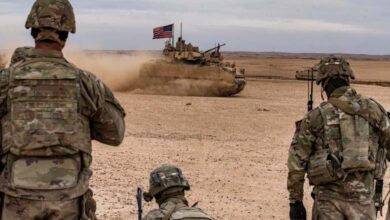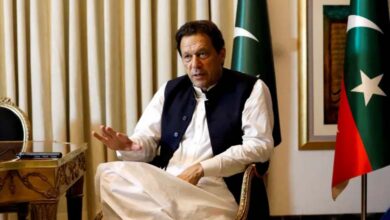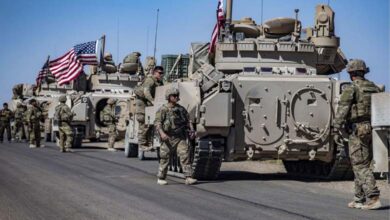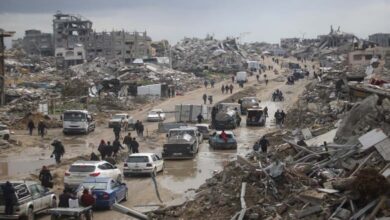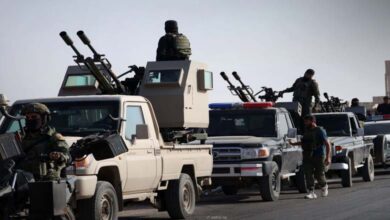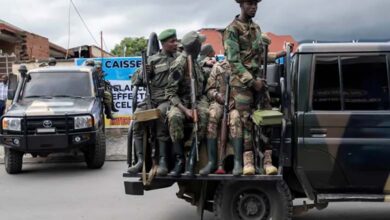Ukraine War: Russian Advance Shifts the Balance of Power and a Target Bank Ahead of Winter
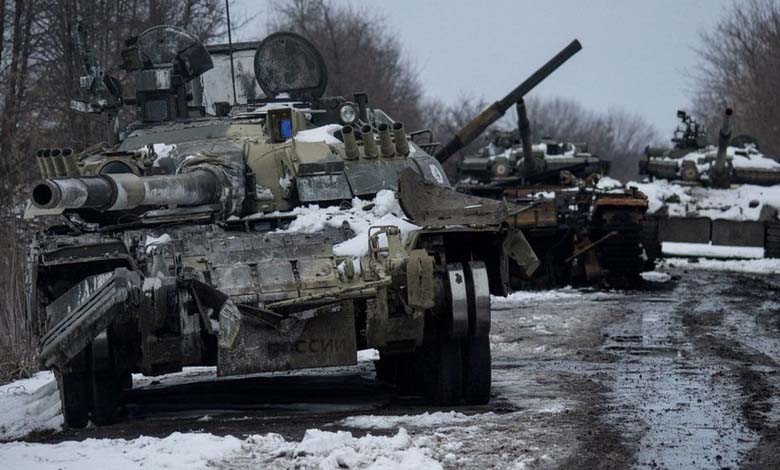
As the Ukrainian war enters its third winter, Russia is aiming for “ambitious” goals, exploiting the “fatigue” of Kyiv, which has just emerged from one of the “most difficult” months of battle.
-
“The Russian Hell” shakes Ukraine… Learn about the “Doomsday” bomb
-
The Ukraine War drains Russian resources and affects its influence in the Mediterranean
According to the American magazine Newsweek, Russia will attempt to “exploit the cracks” in Kyiv’s operations in the Donetsk region as the war moves into its third winter.
Days after showcasing Vladimir Putin‘s forces raising their flags over a municipal building in Seledov, the Russian Defense Ministry stated on Tuesday that its troops had taken control of a key gathering area for Ukrainian defenses.
Seledov is the largest city controlled by Russia since the fall of Avdiivka and is located about 11 miles southeast of the logistics hub in Pokrovsk, which is crucial for achieving Russian objectives, namely controlling the entire Donetsk region and the broader Donbass area.
-
“Wagner” and Military Aircraft: What is the Reality of Russian Presence in Tunisia?
-
Putin Ready for Nuclear War: His Stance on US Forces in Ukraine
Launch Points
Emil Kastehelmi, an open-source intelligence expert at Black Bird, a Finland-based group, stated that Russia is launching an offensive in eastern and southern Donetsk along a front that is 30 to 40 miles wide—from Seledov to the villages east of Velyka Novosilka.
Kastehelmi explained in remarks to Newsweek that “Russian activity has increased in these areas, and Kyiv has been able to advance rapidly in various villages and fields. This is a concerning development for Ukraine, as such rapid movements are not usually observed,” pointing out that “the current advance in Seledov can be seen as a preparation for creating better positions to attack Pokrovsk.”
-
Targeting the Kremlin… Ukraine Fails in Its Counterattack on the Russian Capital
-
Ukraine Attacks Occupied Melitopol, Russian Side Says Two Killed
After taking Seledov, Russian forces will attempt to force Ukrainians to withdraw from Kurakhove, Kastehelmi said, noting that if Moscow succeeds, it will provide good launch points for further operations.
He continued: “Operationally, they are likely trying to push Ukraine out of southern Donetsk, and at the same time, there are potential ambitions to encircle Kurakhove, which is a heavily fortified city.”
-
Ukrainian village bombed… Russian separatists and Kyiv blame each other for cease-fire violations
-
Armenian Prime Minister: The peace talks with Azerbaijan under Russian mediation would be inappropriate
A “Difficult” Month
According to the American magazine, last October was a tough month for Ukraine, as Russian forces made gains south of Kupiansk, advancing up to the Oskil River. On Tuesday, they progressed southeast of Kupiansk and west of Svatove.
Russian forces also crossed the Siverskyi Donets-Donbass Canal, reaching the outskirts of Chasiv Yar before potentially launching an attack on the city. Moscow’s troops have also breached Ukrainian defenses near Toretsk.
-
In Ukraine… A New Enemy Emerges, and Russia Bets on “Trench Warfare”
-
Ukrainian Incursion in the Largest Attack on Russia Since World War II: What Is Happening on the Border?
In the southern direction, Kastehelmi noted how Russian forces advanced more than six miles within just a few days, now controlling most of Shakhtarsk and Novoekrinka, likely gaining full control of Bohoyavlenka.
Newsweek states that this advance and aerial capabilities could have “serious consequences” for Ukraine, which will not be able to bring its equipment close to the front, at least without significant troop losses.
-
Attack « Disrupts » Power Supply in Ukraine and Targets Foreign Mercenaries’ Headquarters
-
Kharkiv: The Tank Manufacturing Hub Destroyed by the Ukrainian War
According to Kastehelmi, the southern attack will continue to make headway through unfortified fields, as well as toward Andriivka, forcing Ukrainian forces to exit the heavily fortified area of Kurakhove, predicting that Kyiv may lose Kurakhove before the end of the year.
Despite this, the Institute for the Study of War stated on Tuesday that the Russian advance of about 14 square kilometers (5 square miles) per day remained slow and “consistent with a positional war rather than a rapid mechanized maneuver.”
-
Power Balance Shifts: American Atacms Missiles Open New Avenues for Ukraine Against Russia
-
“Priority Map”: New Ukrainian Army Commander’s plan to defeat Russia
Shifting the Balance of Power
The Washington Institute for Near East Policy noted that while the capture of Vuhledar and the surrounding Seledov region was “tactically significant,” it does not indicate an increased pace of Russian advances across the front lines, “many of which remain relatively stationary.”
The Institute for the Study of War had previously noted that Russian forces might ramp up their mechanized attacks before the ground turns marshy in the fall months.
-
The military crisis between Ukraine and Russia has escalated
-
Washington increases pressure on Russia by calling on European countries to arrest Putin
Fok Foksanovic, a researcher at LSE IDEAS, told Newsweek, “The fall of Seledov shows that the balance of power has shifted in favor of Russia.”
He noted that Seledov’s preservation from destruction—unlike Bakhmut—can be attributed to two reasons: first, the Russians want to use this city for further operations, and secondly, there weren’t enough Ukrainian troops.
-
Ukraine crisis: Russia vows to scale back near the capital
-
Latest developments… Mariupol city under siege and an open-air hell
He confirmed that the next logical target is the strategic city of Pokrovsk; the Russians intend to complete their control of the Donetsk region, as most of the territorial gains made by Moscow recently are in Donetsk.
Ukraine continues to push for permission to use Western-supplied weaponry to launch deep offensives into Russian territory, also hoping that changes in mobilization laws in the country this April will help quickly replenish their ranks.
-
Zelenskyy Warns War Will Cost Russia for Generations
-
Ukraine Says Russia Bombed Children’s Hospital in Besieged Mariupol
Kastehelmi stated, “Despite the aid and recent mobilizations, Ukraine continues to struggle to stabilize the front and build new capabilities. It is likely that the Russians wish to exploit the cracks in Ukrainian lines, and that’s what we are currently observing.”


